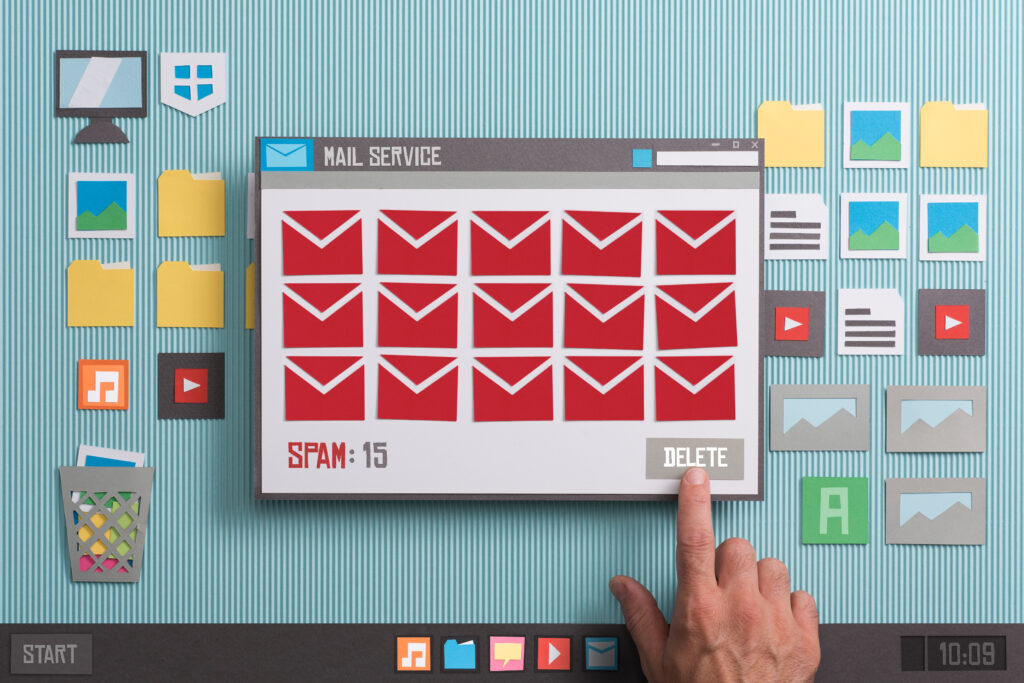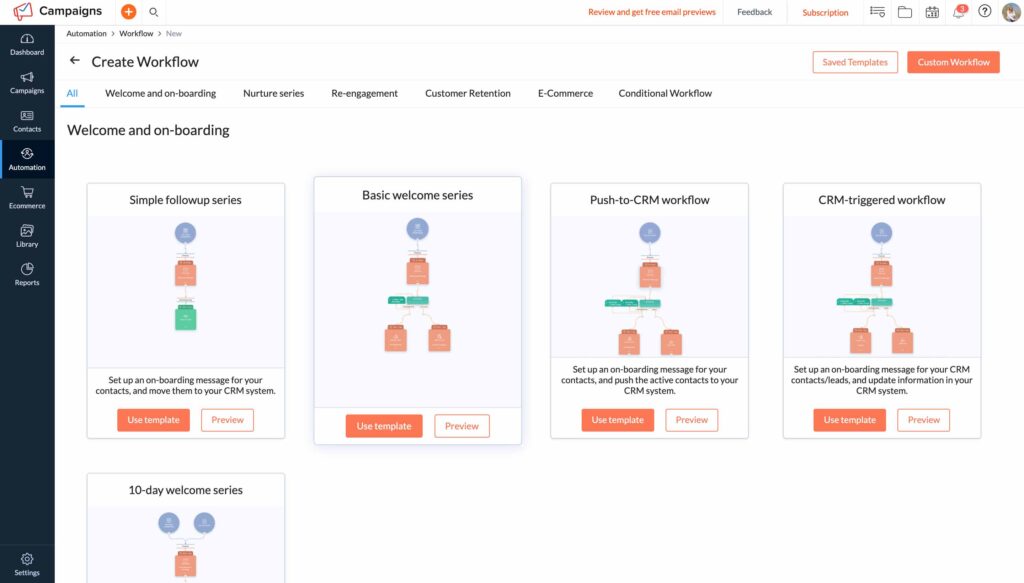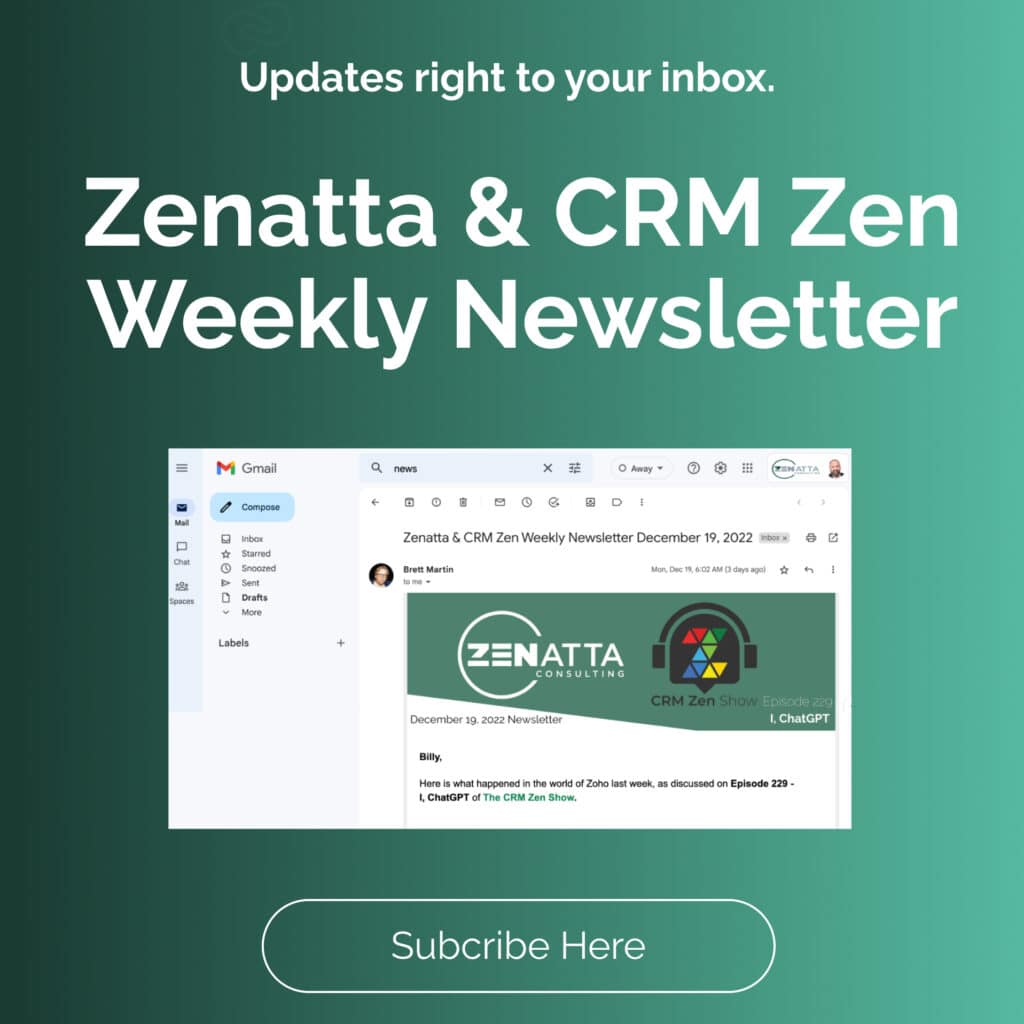Generating leads from digital sources is an expensive process. It requires the investment of substantial capital to create content, buy ads, or manage social media campaigns. In today’s digital landscape, earning leads is more competitive than ever before. In the past, campaigns could earn a return on investment by simply selling customer’s products on a landing page. Today, these campaigns are almost never profitable. Competing businesses usually pay a premium for leads by factoring in the lifetime value of the leads they generate.
Therefore, maximizing customer lifetime value is the key to keeping your marketing efforts competitive. Email marketing is the most effective way of driving customer loyalty and keeping leads engaged over time. With the right email marketing strategy, you can continue a conversation with qualified buyers over the course of months or years until they are ready to make a purchase.
By nurturing leads over time, you can build trust in a way that ensures a customer will choose your offerings when they are ready to buy. The key to getting the most out of any email campaign is to use an effective drip marketing strategy. Segmenting leads based on their activity and sends them the right emails at the right time.
What Is Drip Email Marketing?
Drip email campaigns use automated emails that are sent to subscribers based on their unique activity. The most effective drip campaigns aim to get results over time by keeping customers engaged. Smart campaigns can use key sets of data, such as whether a customer opened an email and whether they clicked through to a link. This then segments customers and determines what emails should be sent out. Segmented email chains can be created manually or generated automatically.

An email drip campaign can be used in conjunction with data from other sources to improve performance. For instance, companies can use data from their CRM to target existing customers with upsells or new promotions. Highly targeted emails can be created for small sets of loyal customers with distinct characteristics. Over time, drip email campaigns can accumulate substantial data that can improve the performance of email marketing efforts. Also, it provides valuable insights that can help businesses improve other areas of their organization.
Why Use an Email Drip Campaign?
Drip campaigns are one of the best ways for businesses to maximize customer lifetime value. Drip campaigns can inform leads who do not buy immediately about the benefits that a product or service can offer. Over time, this information can gradually help a customer to see why they should make a purchase. When high-quality information is sent to leads over time, it can also help to drive loyalty in ways that are almost impossible to achieve through other channels. Therefore, companies can have a greater chance of being selected as a vendor when leads are ready to move forward with a purchase.
Companies can also leverage drip campaigns to encourage existing customers to buy more. In most industries, an initial purchase should only be the beginning of a customer relationship. The vast majority of revenue from a customer is usually earned after the initial purchase through re-buys and the purchase of similar offerings. Drip campaigns strongly encourage additional purchases by sending information directly to a customer’s inbox. This information helps to remind customers to buy a product while also persuading them to purchase in a manner that appears to be helpful.
Segmenting Your Subscribers
Drip campaigns are effective because they enable businesses to segment their subscribers based on previous interactions. In sophisticated campaigns, customers can be sent emails after returning to a company’s website, clicking on retargeting ads, or opening an old email. These actions are strong indicators that a customer is still considering making a purchase or even ready to buy. Marketers can look at what page a customer viewed to see what the customer is likely to be thinking. A highly targeted and timely email can then be sent out to encourage the customer to take action.
Companies can also segment subscribers based on the velocity of their interactions. If subscribers only rarely open emails, they can be sent only the most important emails at a relatively slow pace. In contrast, highly engaged customers who open every email could be sent a message on a daily basis. In this way, businesses can minimize spam reports to successfully appear in a customer’s inbox when doing so matters most.
Types of Drip Campaigns
Welcome emails
Leads expect to receive what they are looking for immediately after subscribing to a newsletter. For instance, if a lead signs up to receive a free ebook, immediately receiving that book is expected. If expectations are not realized, many people will immediately unsubscribe or even flag future emails as spam. Using the right welcome email starts a drip-email campaign off in a way that encourages engagement in the future.
Lead nurturing emails
Many of the most effective drip campaigns focus on nurturing leads over time. Creating drip campaigns for lead nurturing can take a substantial amount of time since hundreds of different emails will usually need to be created. Nevertheless, the effort required to create chains of lead nurturing emails can pay off big when the long-term close rate of lead generation campaigns is multiplied.
Onboarding emails
When customers first make a purchase, you immediately want to get their engagement, onboarding emails are key. These help convey information about the next steps to take to achieve the customer’s end goal. When done right, onboarding emails significantly enhance satisfaction while eventually encouraging additional purchases in the future.
Re-buy emails
Some emails can be sent to encourage existing customers to buy again at the right time. Many companies have found success by using advanced data to determine when customers are likely to be running low on a product they bought recently. A customer can then be hit with an email that encourages them to make another purchase.
Retargeting emails
When customers leave a website without making a purchase, encourage them to come back by sending the right series of emails. Shopping cart abandonment is a prime example of the perfect opportunity to send an email. Additionally, retargeting emails used after a customer visits certain pages or does certain actions that strongly indicate a willingness to purchase, such as filling out an inquiry form or visiting certain landing pages.
Improving Conversion Rates
One of the best aspects of drip campaigns is that they generate a substantial haystack of data. With a little work, this data refined is great for future campaigns. At all stages of a campaign, marketers can see data on email opens, click-throughs, and other activities. As a result, marketers can split-test any variable in emails to determine the perfect wording, images, colors, and buttons for getting more conversions. The sequence of emails can also be optimized to maximize conversions.

Since unique emails are sent to each individual subscriber, it is possible to tailor emails to each subscriber. For instance, marketers compose emails in such a way where certain sentences or headers change based on what segment a subscriber is in. Assign subscribers from multiple attributes based on data from a wide range of sources, allowing customized emails. Certain words or images can even be changed based on what industry a customer is in.
Although marketers have to be careful to only swap out variables in ways that truly add value and do not come off as creepy, the bottom line is that drip campaigns offer many ways to dramatically improve conversion rates with the help of modern technology.
Setting Up a Drip Campaign
Setting up a drip campaign takes time, but there are tools available in the marketplace that can help businesses to create these campaigns in less time. Zoho is one of the best options for creating drip campaigns because it provides the full range of functionality necessary to get the most out of an email campaign. Zoho is also designed to increase conversions for many different types of websites, including e-commerce websites, consultants, local businesses, and affiliate marketers. Its products can help to create welcome emails, lead nurturing emails, retargeting emails, and other emails that are essential for specific types of drip campaigns.
Creating Email Chains
Another major advantage of Zoho is that it makes it easy to create workflows for email chains. As mentioned earlier, you will need to create flow charts that determine the order of emails sent to different segments of customers. Zoho enables marketers to set up workflows using a simple drag-and-drop editor. The platform also gives marketers the power to view historical data in an intuitive way to optimize workflows over time. Workflow editors also determine when emails send after specific interactions, such as opening an email or returning to a website. In this way, different segments of subscribers can receive emails in the right sequence and at the right time.
Make Your Voice Heard
What have you done to get more revenue out of your drip campaigns? What was your experience with Zoho? Reply below to share your experience with other marketers.


